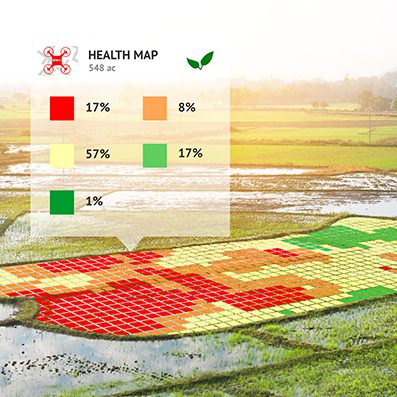The Future of 5G and Smart Farming
The early stages of 5G have focused on enabling high-bandwidth connectivity. Before 5G infrastructure becomes more ubiquitous, centralized farms will be the most practical use cases. A large corporate farming operation might build a private 5G network to enable high-bandwidth use cases (e.g., crop monitoring using drones) and aggregation of data from thousands of transactional or triggered IoT sensors.

For now, 5G will be most leveraged when a farming operation utilizes large amounts of data from disparate sources. On an industrial chicken farm, data from thermostats and feeding machines come to a central connection point. Each of these thousands of sensors generates small data amounts for too little cost or complexity for a broadband-grade 5G data pipe. When aggregated in properly dimensioned clusters, the resulting bandwidth can align with 5G mobile broadband bandwidth. 5G is an excellent solution to aggregate and backhaul this information.
We can expect 5G 3GPP Release (Rel) 17 to empower massive IoT in three to five years. Rel 17 will enable developers to leverage the standard for low-power devices operating on the 5G New Radio (NR) radio access network (RAN). When this happens, data aggregation over short-range radio technologies can be mitigated since low-cost, low-power sensors can operate on low-power 5G NR modems.
Over the next five to 10 years, lower LTE categories (i.e., NB-IoT and LTE-M) will play a leading role in connectivity options for remote agricultural sensors. As the technology evolves, power needs and costs will drop, enabling new designs and concepts for remote agricultural sensors. As 5G standards develop, the end-to-end ability to bridge technologies will become more seamless.
Ref: https://www.telit.com/blog/5g-smart-farming-agriculture-use-cases/
Comments
Post a Comment